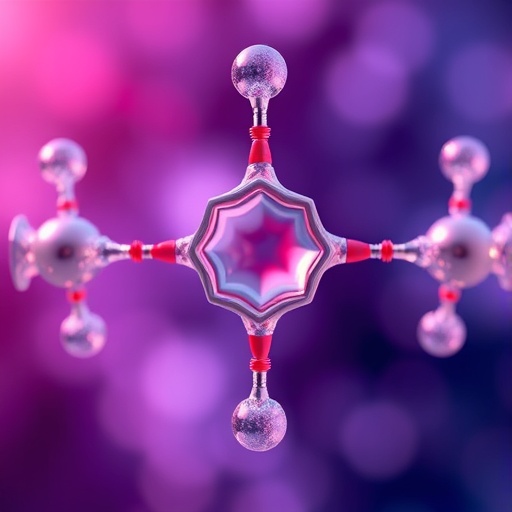Recent advancements in the field of medicinal chemistry have shed light on the promising capabilities of adamantane-linked heterocycles. These unique molecular structures exhibit significant potential in addressing various biological challenges faced by contemporary medicine. The recent contribution by Helal, Abusaif, and Ragab has provided deeper insights into the synthesis and biological activities of these intriguing compounds.
Adamantane itself is a saturated hydrocarbon with a distinctive tetrahedral structure, often employed as a scaffolding moiety in drug design. By linking heterocycles to this robust framework, researchers can create a diverse array of compounds that enhance solubility, stability, and biological efficacy. This innovative approach is gaining traction in pharmaceutical development, as scientists relentlessly seek to optimize drug properties through structural modifications.
The interest in adamantane-linked heterocycles extends beyond their molecular architecture; it encompasses their versatile applications in treating a multitude of diseases. Preliminary studies indicate that these compounds exhibit antiviral, antimicrobial, and anticancer activities. For instance, the antiviral properties attributed to certain adamantane derivatives have been extensively investigated, particularly their effectiveness against viruses such as influenza and SARS-CoV-2. The structural stability of adamantane provides a reliable framework for crafting derivatives with enhanced pharmacological profiles.
Furthermore, synthesis methodologies for creating adamantane-linked heterocycles have undergone significant evolution. The latest research underscores the efficiency of multicomponent reactions and modular synthesis techniques, which expedite the formation of these complex structures. By employing such methods, chemists can not only achieve higher yields but also a greater variety of derivatives, thus broadening the scope of biological testing. The chemical reactivity of adamantane allows for site-selective functionalization, enabling researchers to introduce various heterocycles that tailor biological activity to specific therapeutic targets.
Moreover, the biological evaluation of adamantane-linked heterocycles reveals their multifaceted actions at the molecular level. Recent findings demonstrate that these compounds can disrupt viral entry mechanisms, inhibit replication, and interfere with critical biochemical pathways essential for pathogen survival. Their multifunctional nature makes them compelling candidates for further exploration, especially in the context of emerging infectious diseases where conventional treatments are faltering.
The therapeutic landscape for cancer treatment is also witnessing the potential of adamantane-linked heterocycles. These compounds can modulate important signaling pathways involved in tumor growth and metastasis. For example, studies are currently underway to evaluate their impact on the apoptosis process and cell cycle regulation. The ability to influence such pathways positions adamantane derivatives as significant contributors to the next generation of cancer therapeutics.
In addition to their therapeutic activities, the physicochemical properties of adamantane-linked heterocycles have been scrutinized. The unique three-dimensional structure of adamantane often translates into improved membrane permeability and solubility characteristics in its derivatives. This feature is crucial for drug candidates as poor solubility still remains a primary hurdle in drug development. Innovations in the design of these compounds aim to overcome the solubility barrier while maintaining their biological efficacy.
One particularly noteworthy aspect of recent research is the exploration of the mechanisms through which adamantane-linked heterocycles exert their effects. Utilizing advanced techniques such as molecular docking and in vitro assays, researchers are uncovering the target interactions and pathways modulated by these compounds. This mechanistic insight is essential for refining the design of new derivatives and predicting their pharmacological behaviors in biological systems.
Furthermore, the combination of computational modeling with experimental validation is paving the way for a more systematic approach to drug design in this domain. Computational chemistry allows scientists to predict how different modifications to the adamantane framework might impact their biological activity, enabling targeted and efficient synthesis strategies. This streamlined process not only accelerates discovery timelines but also reduces costs associated with experimental failure.
With the healthcare landscape continuously evolving, the development of novel therapeutic agents from adamantane-linked heterocycles is particularly timely. As drug resistance becomes increasingly prevalent, the urgent need for innovative approaches to treatment cannot be overstated. The unique properties of these heterocycles position them as critical players in the search for next-generation pharmaceutical applications.
In conclusion, the recent advances in the synthesis and biological evaluation of adamantane-linked heterocycles represent a significant milestone in medicinal chemistry. The remarkable versatility of these compounds, coupled with their potential to combat pressing health challenges, emphasizes their importance in future research endeavors. As scientists continue to unravel the complexities surrounding these molecules, a new era of targeted therapies may well be on the horizon, ushering in more effective treatments for a variety of diseases.
Emerging trends in this field suggest that collaborative efforts across disciplines will be vital in maximizing the translational potential of adamantane-derived therapeutics. By integrating insights from chemistry, biology, and pharmacology, researchers can foster innovation and overcome existing barriers in drug design and development. Thus, the journey of adamantane-linked heterocycles in the realm of medicinal chemistry is just beginning, and the possibilities seem limitless.
As we look forward, it will be crucial to maintain a keen focus on the ethical implications of developing new therapeutics and to ensure that advancements in this promising research area ultimately translate to enhanced health outcomes for patients worldwide. The coming years will be pivotal in determining how these advancements can be effectively harnessed to address both current and future challenges in medical science.
Subject of Research: Advances in adamantane-linked heterocycles for medicinal chemistry.
Article Title: Recent advances in adamantane-linked heterocycles: synthesis and biological activity.
Article References: Helal, M.H., Abusaif, M.S., Ragab, A. et al. Recent advances in adamantane-linked heterocycles: synthesis and biological activity.
Mol Divers (2025). https://doi.org/10.1007/s11030-025-11384-3
Image Credits: AI Generated
DOI: https://doi.org/10.1007/s11030-025-11384-3
Keywords: Adamantane, Heterocycles, Medicinal Chemistry, Antiviral, Anticancer, Drug Design.




